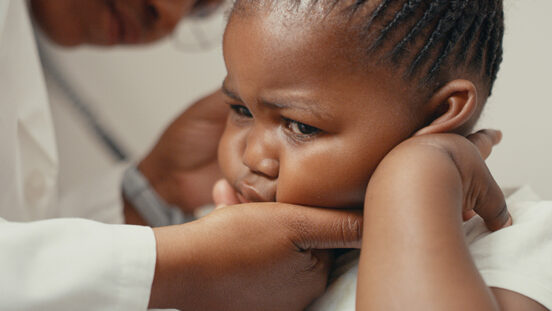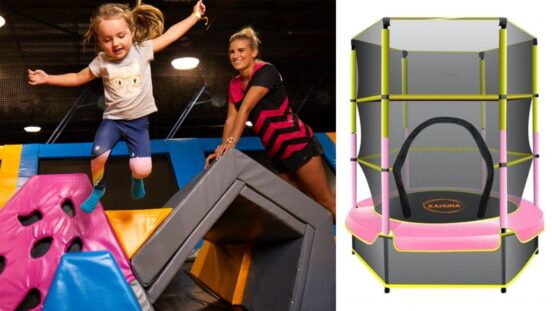Yes, you can give your baby nuts!
Australian parents are so confused about allergies.
By Heidi Young, The Nest CPR
Guidelines about allergies and food introduction has changed a lot over the last few decades.
No wonder parents are confused about the rules of introducing food to their children.
In this article we are going to lay out a guideline for you to follow for how to introduce nuts to your baby.
Not so long ago, pregnant women and new mums were being told to “avoid eating nuts in your pregnancy, because it can cause allergies to your unborn child, and NO! You should definitely not be giving your six month old baby peanut butter! Are you mad?!”
That may be a bit dramatic, but this is a loaded topic and one riddled with myth and legend. We now know that introducing common allergenic foods to your baby, reduces the risk of childhood allergy by 80 percent.

Heidi Young is a mum of two young boys, a paediatric nurse of two decades, clinical nurse specialist in childhood allergy and the founder at The Nest, Kids CPR & Allergy.
This explosion of childhood food allergy diagnosis has created mass fear and panic in parents of young children when it comes to giving them solids for the first time. Especially those top 9 common allergy foods listed below.
Because of this, parents have resorted to parking upo outside their local hospital or GP to give peanut, tree nuts or egg for the first time. It’s the great unknown, so why not?
In 2000, the American Academy of Paediatrics released a position statement recommending the avoidance of cow’s milk until the age of 12 months, eggs until 24 months, and nuts and fish until 36 months in infants at high risk due to family history and eczema for example. This was supported by evidence from two studies, however these recommendations were shown to be based on consensus rather than direct evidence.
In 2006, a few years after this, studies started to be published that showed this previous advice was not accurate.
Dr Gideon Lack, became the lead investigator on the LEAP study. The LEAP Study (Learning Early About Peanut) showed that by consuming peanut early on as an infant, reduced the rate of peanut allergy by 81 percent.
The top 9 common allergenic foods should all be introduced by the age of 1 year old, they are:
- Cow’s Milk
- Egg
- Sesame
- Peanut
- Tree nuts
- Wheat
- Fish
- Shellfish
- Soy
My recommendation today is take a look at the guide below on how to introduce foods at home, including nuts and egg and remember that statistic of 81 percent reduction rate in peanut allergy with early introduction, be comforted by that number.
Although 10 percent of under one year olds now have a diagnosed food allergy, 90 percent don’t!

Introducing common allergenic foods to your baby, reduces the risk of childhood allergy by 80 percent.
How Do I Give My Baby Nuts For The First Time?
Here is a great way to gradually introduce nuts or any other solid foods at home if your child does NOT have an allergy to them.
This just a guideline for parents who prefer to have a structured introduction process. It is equally ok to just give these foods as you wish!
- Start by giving 1/8 of a teaspoon of good quality nut butter, ground up nut or scrambled egg.
- Then you can wait 30 mins before doubling that to 1/4 of a teaspoon.
- Now wait a further 30 mins before giving 1/2 a teaspoon and then…
- You guessed it, another 30 mins before giving a whole teaspoon!
- This is usually enough to know whether they are ok with that particular food.
It is very important to keep that food in the diet on a regular basis once they are introduced to it.
Once they are fine with all the nuts, you can buy a bag of mixed nuts and grind them up together, keep them in a container in the fridge (it’ll keep for months!) and add a scoop to their yoghurt, bolognese or cereal at least once a week! This is an easy way to know that they have regular exposure to all the nuts.
You can get macadamia, peanut, almond, cashew and brazil in paste form. You can use hazelnut meal too. Any other nuts can be blended up to form a fine meal.
We recommend you do this in the morning so that you can spot any potential reactions.
WATCH: Seizure First Aid for Children. Continues after video …
What does a reaction look like?
Let’s recap what a mild, moderate and severe reaction (anaphylaxis) can look like, I will include a more detailed explanation under the ASCIA severe symptom definition:
- Mild to moderate allergic reaction
- Swelling of lips, face and eyes
- Hives or welts
- Tingling mouth
- Abdominal pain and vomiting
- Signs of severe allergic reaction (anaphylaxis)
- Difficult/noisy breathing
- Although this might be happening, the child might still seem like they are quite happy and wide awake, especially in young children. There is not necessarily distress.
- Swelling of the tongue: Not a very common symptom but it becomes quite obvious because they don’t want to close their mouth.
- Swelling/tightness in the throat: A young child in particular will likely start grabbing at their neck. If your child can talk, it is sometimes useful to ask them if they feel like they have bugs in their throat or a stone in their throat. ‘Bugs’ can just be tingling and less concerning, a ‘stone’ is how it feels when your throat swells.
- Wheeze or persistent cough: The most common symptom we see, but again, the child can seem otherwise fine and quite happy. However, they may also be distressed. It’s different every time.
- Difficulty talking/hoarse voice: Ask your older child to count to 10 and see if they can. In a young child, even their cry will sound different.
- Persistent dizziness/collapse: This is how older children will describe the drop in blood pressure
- Pale and floppy (young child): There may be no other symptoms at all, but a child can just go pale and floppy or sleepy with no other signs. Hives and swelling do not always occur before anaphylaxis.
With any signs of severe allergic reaction, you should call an ambulance immediately, or if you have an Epipen, give this first then call an ambulance.
The Nest, Kids CPR & Allergy is run by Heidi and a team of other trusted qualified health professionals who run infant and child first aid, CPR and anaphylaxis classes in NSW and ACT.




